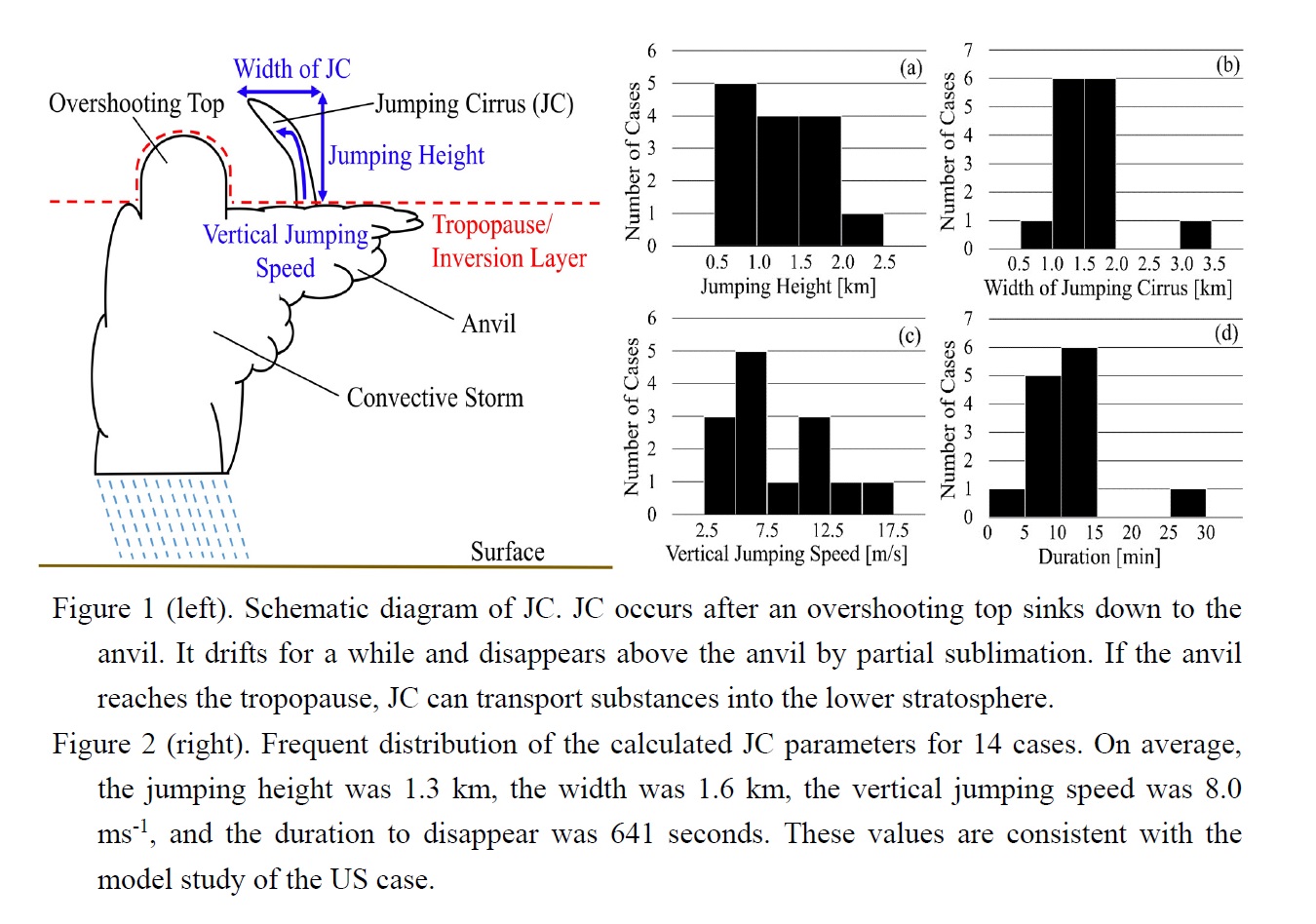Graphical Abstract
Seguchi, T., S. Iwasaki, M. Kamogawa, T. Ushiyama, and H. Okamoto, 2019: Observation of jumping cirrus with ground-based cameras, radiosonde, and Himawari-8. J. Meteor. Soc. Japan, 97, 615-632.
https://doi.org/10.2151/jmsj.2019-033
Graphical Abstract with highlights
Plain Language Summary: This is the first study where jumping cirrus (JC), a cirriform cloud which literally jumps up and drifts away at the top of anvil of deep convective clouds, is analyzed based on the observation with ground-based visible cameras. Combined with a star chart, infrared band of Himawari-8, and radiosonde, JC’s size, timescale, and environmental atmosphere were investigated for 14 cases during the summer in the Kanto area, Japan. The results showed that even if the underlying convection is relatively weak, JC can occur and 3 cases of JC entered the lower stratosphere. JC is likely to moisten the lower stratosphere by sublimation and contribute to the estimation of stratospheric water vapor.
Highlights:
- Compared with the US case reproduced by a model simulation, the JC’s height, vertical speed, and duration shows similar scales.
- On the other hand, all the cases occurred from relatively smaller cumulonimbus which stems from smaller convective available potential energy (CAPE).
- There was no correlation between JC parameters and environmental atmospheric parameters.







